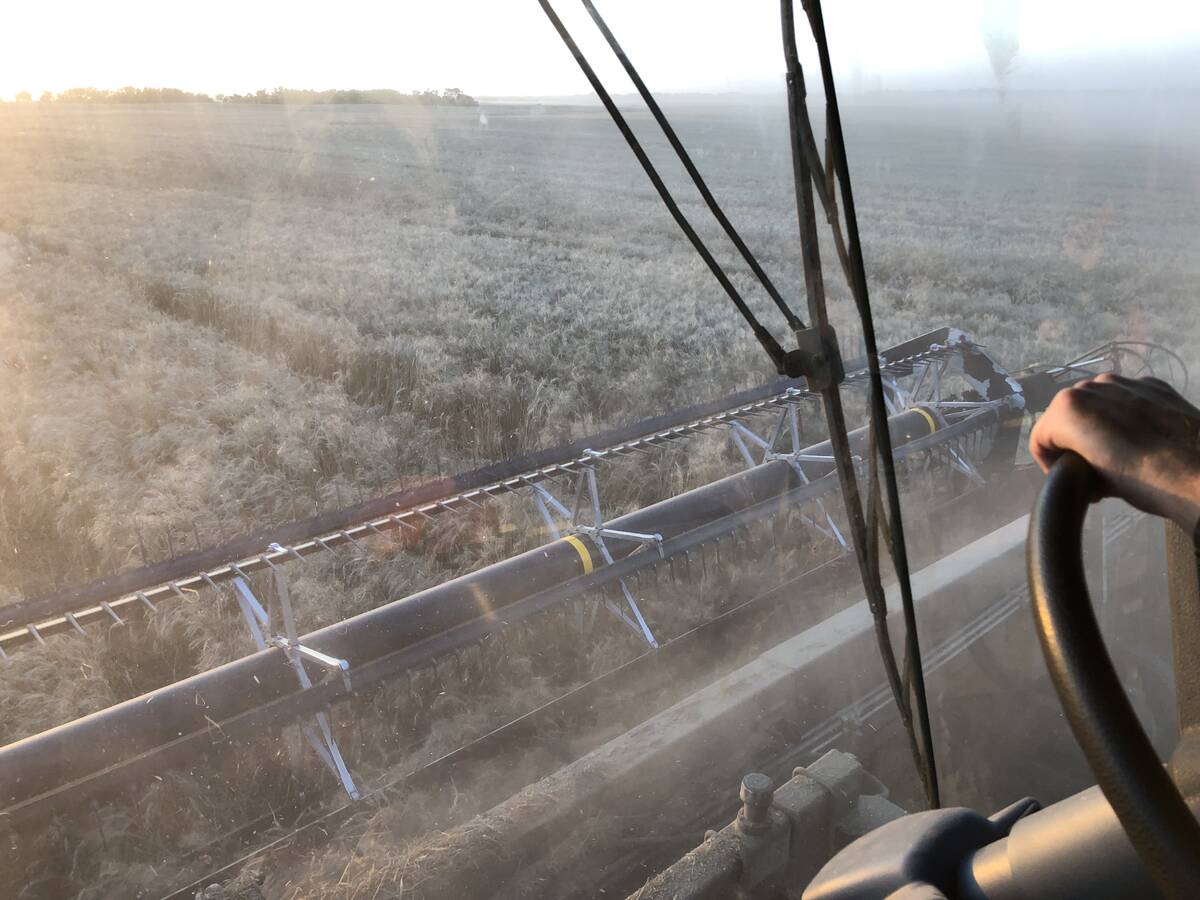Prairie symbols | Art lining Louis Riel Trail depicts story of Metis life
KENASTON, Sask. — She’s made of steel, stands nine feet tall and weighs 850 pounds.
Her outstretched hand points to the prairie. She is Cree. The other hand gently touches her son’s head (four feet, 275 lb.) who follows his mother’s learned gaze. He is Metis.
Their lifelike hair is crafted from stainless steel that has been painted black. A necklace of antler tips hangs from her neck. The buckskin clothing and moccasins are sheets and straps of one-eighth inch steel moulded and welded together by their creator.
Read Also

Mail strike disrupts grain sample delivery
The Canadian Grain Commission has asked farmers to consider delivering harvest samples directly to CGC offices, services centres or approved drop offs as Canada Post strike delays mail.
Don Wilkins is busy putting the final touches on his latest sculpture at its final resting place. It’s a small triangle of provincial highways de-partment land two kilometres north of Kenaston, just east of Highway 11 and accessible by road.
Wilkins prepared the site by himself using his own machinery.
Two years in the making, The Lesson is Wilkins’ seventh metal sculpture that he built in his farm shop near Davidson, Sask. His tools are basic: a cutting torch, welder, hammer and pry bar with jaws for bending metal.
Passionate about Northwest Canadian history, the retired farmer is focused on recreating moments on the Prairies between 1850 and 1895. During the winter months he creates steel sculptures that are dedicated to the history of the Metis.
In 2001 Wilkins chaired a small committee that successfully lobbied to rename Highway 11 between Regina and Prince Albert the Louis Riel Trail.
Since then, Wilkins has been creating and installing historical references to Metis life along that stretch of the highway.
Fifteen Red River cart replicas, also made of metal, accompany his sculptures and represent his signature work.
“Nothing symbolizes Metis way of life like the Red River cart,” he said.
“They are the manufacturers of that cart. It’s what they used on the great buffalo hunts and transporting goods for the fur companies. Up until the railroad, it was the most important freight carrier the west had.”
Wilkins said his latest statue is a tribute to the First Nations women.
“She is Cree and he is Metis. That is really the characteristic of the human evolution when this country was opened up to European contact. The Europeans took native women for their country wives but also for many other practical reasons,” he said.
“Reading about the native women in our Canadian history, you just pick up so much respect for them. I really feel that they were undervalued….That’s why I think she had a lot to tell her son. He would be well advised to take heed in what his mother was pointing out.… Probably she’s looking at the landscape and there’s something out there she thinks he should notice. I think her teaching goes on constantly. She’s imparting a prairie survivor’s philosophy, the understanding of this land.”
Wilkins said the land and nature also shaped him and inspired his art. As a boy growing up near what is now Grassland National Park in southern Saskatchewan, he wandered the land around his family’s remote home.
“The hills became my friends. They were part of me,” he said.
“I’m taking my family back on occasion and showing them why I am what I am. Somehow, the environment you grow up in has woven its way into your life, into your habits and whatever you’re doing.”

















